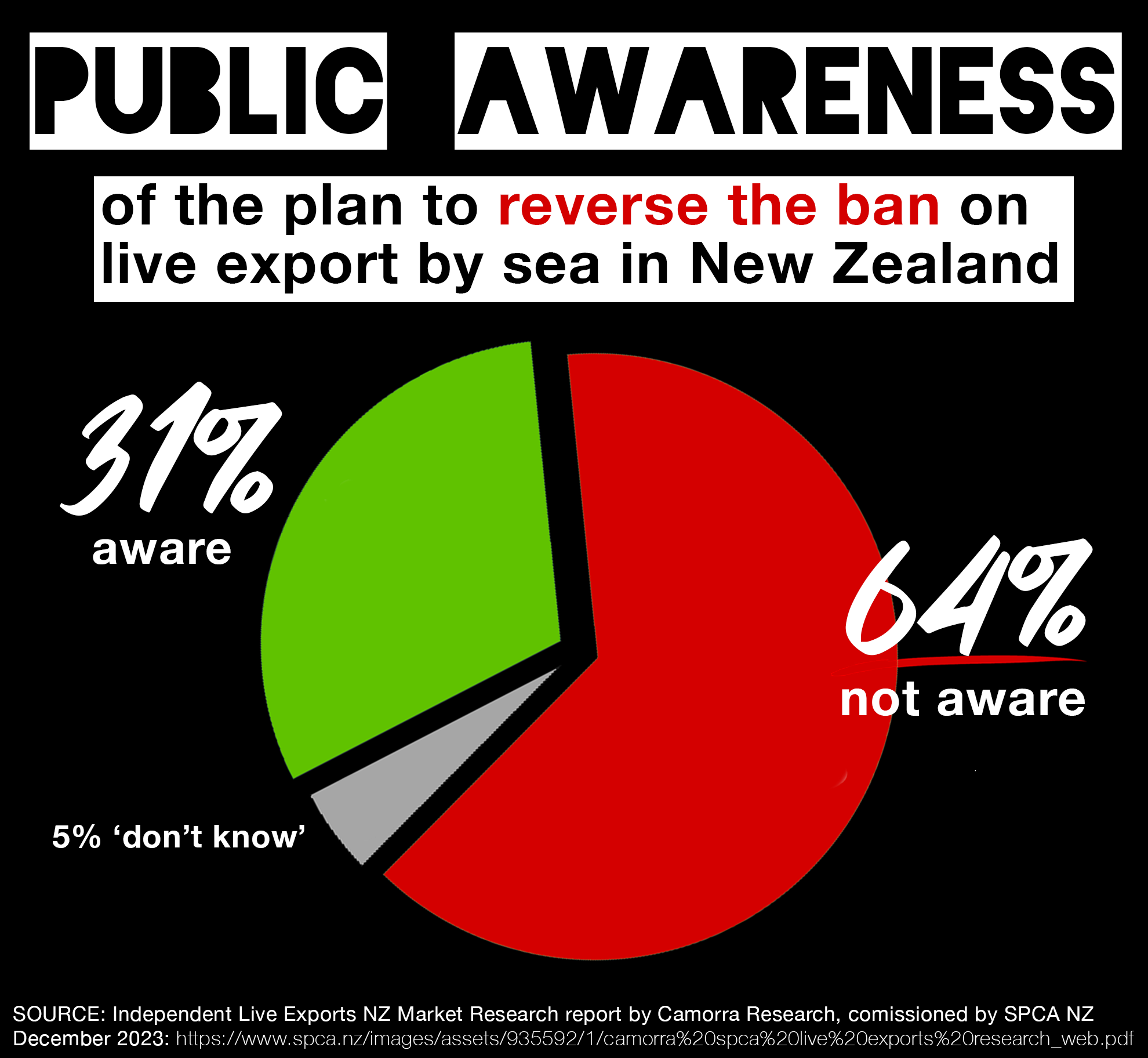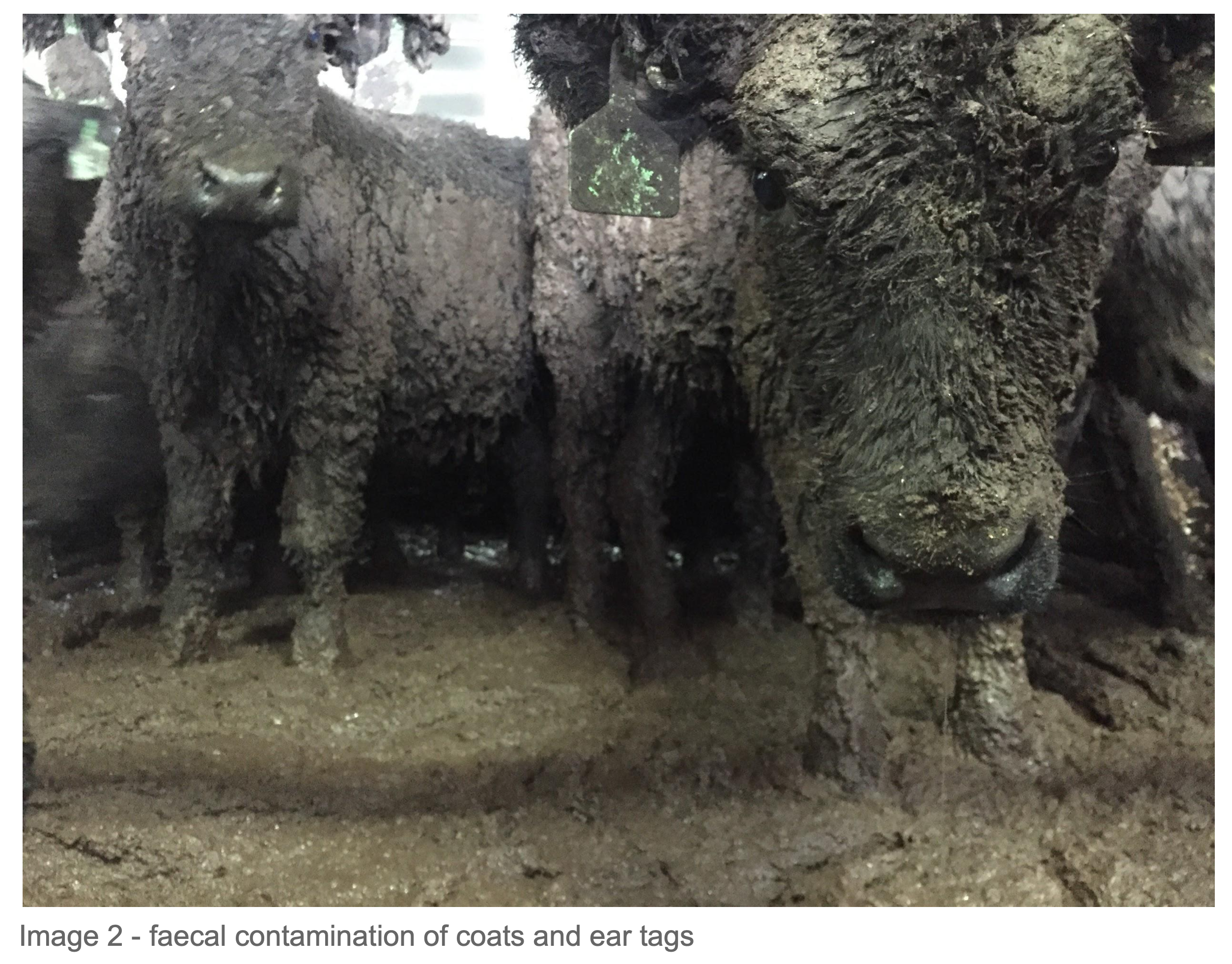

What is live export?
Live export refers to the practice of transporting live animals, typically livestock such as cattle, sheep, and sometimes other animals like deer, by sea or air to overseas markets for the purpose of breeding, farming, or slaughter. In 2021, the New Zealand Labour Government announced a ban on live export by sea, which came into effect in April 2023. NZ still exports live pigs, goats, llamas, alpacas, deer, horses, bees, eels, crayfish and millions of day-old baby chicks every year. With the National Party back in power, the ban on live export by sea is at risk of being overturned.
Why should we care?
In the wake of the recent national election, both the Act and National Party have signalled their intent to revive live export by sea, a practice halted in April. In response to welfare concerns, assurances have been made that the revived industry will employ purpose-built ships adhering to the highest welfare standards, promising a comfortable journey for the animals on board.
However, scepticism arises in light of recent statements by Mark Willis, Head of Livestock Export New Zealand. Willis claimed that the ships used prior to the ban were already operating at a near “gold standard” and he expressed being “unaware in the last two years of any veterinary diagnosis of heat stress.”
These statements, however, are at odds with voyage reports obtained by Animal Save Aotearoa under the Official Information Act. Animal Save spokesperson Elin Arbez states, “Multiple documented cases of heat stress, recorded by onboard veterinarians, challenge Mr Willis’ statement, and the notion that the previous industry standards were as exemplary as claimed. For instance, during the May 2021 sailing of the Brahman Express, heat stress was identified as the cause of death for four cows, according to veterinary diagnoses.”
The released reports reveal a litany of injuries and health issues prevalent during these voyages, including fractures, lacerations, abscesses, necrotic wounds, arthritis, respiratory issues, and premature birth/lactation. Contagious conditions like ringworm, pinkeye, and gastrointestinal problems were also prevalent. The data from 2021 and 2022 indicate that thousands of cows experienced lameness, some progressing to severe stages necessitating euthanasia. Shockingly, over 6,000 cows perished before reaching China, with an additional 300 deaths occurring in the 30-day post-voyage quarantine period.
Selling our farming heritage
Not only is live export an animal welfare disaster, it is economically short-sighted; a greedy minority make short-term profit by selling prized NZ breeding stock to China at the long-term expense of our domestic industries — a middle finger to our Kiwi farming heritage. Polling finds the majority of farmers are opposed to the practice.
Why we protest
The suffering endured on live export ships is well-documented, undeniable and unacceptable.
New Zealand established itself as a world leader in animal welfare by consigning this barbaric practice to the history books. To go backwards now would be a grave regression for our country, our international reputation, our ethical farmers, our long-term economy.
We can never claim to be a ‘clean, green’ nation while allowing a greedy few to profit from a filthy practice that inflicts horrific suffering.
History will judge our choices.
We will stand against this cruelty for as long as it takes. Will you stand with us?